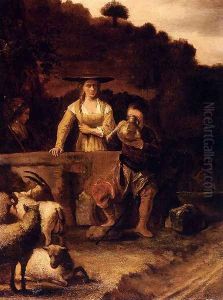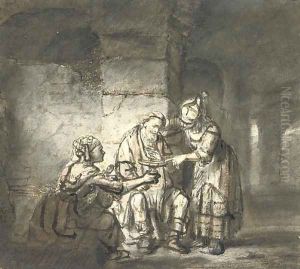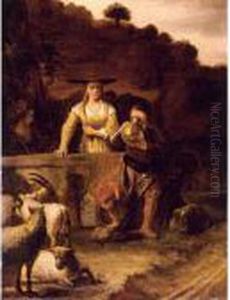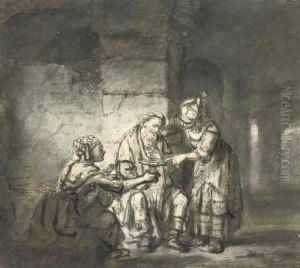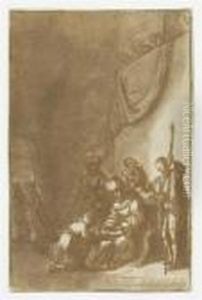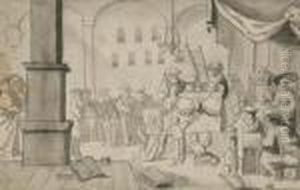Constantijn Van Renesse Paintings
Constantijn van Renesse was a Dutch Golden Age painter and etcher, known primarily for his work as a pupil and assistant of the renowned artist Rembrandt van Rijn. Born in 1620 in the town of Maarssen, near Utrecht, Van Renesse came from a well-to-do family. His father was an influential local figure, which may have helped Constantijn access the artistic circles of his time.
Van Renesse's artistic journey began under the guidance of a less-remembered painter, Abraham Bloemaert, before he became one of Rembrandt's students in Amsterdam. This apprenticeship was crucial in shaping his style and artistic direction. Working with Rembrandt, Van Renesse not only learned the master's techniques but also absorbed his approach to light, shadow, and composition. However, Van Renesse did not attain the same heights of fame as some of Rembrandt's other pupils, such as Gerrit Dou or Govert Flinck.
Despite the lack of widespread recognition, Van Renesse made contributions to the Dutch art scene, particularly through his etchings and drawings. His works often reflected Rembrandt's influence but also demonstrated his personal interpretation of subjects, including portraits, biblical scenes, and landscapes.
Van Renesse's career as an artist was relatively short-lived. He eventually returned to his hometown area and took on a different career path, becoming involved in local administration and church affairs. This career shift led to a decline in his artistic output, and as a result, his works became less common and are not as well-known today.
Constantijn van Renesse passed away in 1680 in Elburg, where he spent the latter part of his life. His legacy, although overshadowed by his teacher and other contemporaries, provides valuable insight into the teaching methods of Rembrandt and the artistic environment of the Dutch Golden Age. Art historians often study his works to better understand the dissemination of Rembrandt's techniques and stylistic influence among his pupils.
